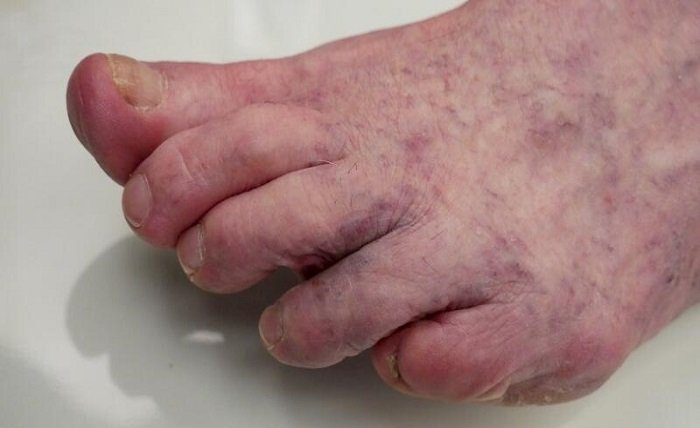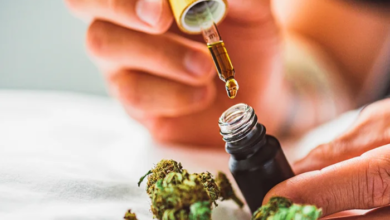Photos of Mottled Skin: What They Show and How They Can Help

Mottled skin is a condition that causes the skin to have a patchy and irregular appearance with red, purple, or blue marks. Mottled skin can affect any part of the body and can have various causes, such as cold exposure, blood circulation problems, vascular diseases, infections, medications, or autoimmune disorders. Mottled skin can also be a symptom of a serious and life-threatening condition called shock, which requires immediate medical attention.
Photos of mottled skin can help to show the characteristics and severity of the condition, as well as to identify the possible underlying causes and complications. In this article, we will explain how photos of mottled skin can help to diagnose and treat the condition, and where to find them online.
How Photos of Mottled Skin Can Help to Diagnose the Condition
Photos of mottled skin can help to diagnose the condition by showing the following features:
- The pattern and shape of the patches or spots on the skin. Mottled skin usually has a lacy or net-like pattern (reticularis) that can vary in size and shape. Sometimes, the pattern can be broken or irregular (racemosa).
- The color and intensity of the patches or spots on the skin. Mottled skin usually has a bluish-red or purple color that can change depending on the temperature, blood flow, or pressure on the skin. Sometimes, the color can be darker or lighter than normal.
- The location and distribution of the patches or spots on the skin. Mottled skin can affect any part of the body, but it is more common on the extremities (arms and legs), trunk (chest and abdomen), or face. Sometimes, the patches or spots can be localized or widespread.
- The presence or absence of other symptoms or signs on the skin or elsewhere in the body. Mottled skin can be accompanied by other symptoms or signs that can indicate the underlying cause or complication of the condition, such as pain, swelling, ulcers, nodules, rash, fever, breathing problems, etc.
Photos of mottled skin can help to compare the condition with other similar or related conditions that affect the skin’s appearance, such as:
- Raynaud’s phenomenon: A condition that causes the fingers and toes to turn white, blue, or red due to reduced blood flow in response to cold or stress.
- Erythema ab igne: A condition that causes a brownish-red discoloration of the skin due to prolonged exposure to heat sources.
- Cutis marmorata: A normal variation of skin color in infants and children that causes a bluish-red mottling of the skin when exposed to cold.
- Purpura: A condition that causes bleeding under the skin that results in purple or red spots or patches.
Photos of mottled skin can help to monitor the progress and response to treatment of the condition by showing any changes or improvements in the appearance of the skin over time.
How Photos of Mottled Skin Can Help to Treat the Condition
Photos of mottled skin can help to treat the condition by providing information and guidance for healthcare providers and patients. Photos of mottled skin can help to:
- Confirm or rule out a diagnosis of mottled skin based on its features and characteristics.
- Identify or exclude any underlying causes or complications of mottled skin based on its associated symptoms or signs.
- Determine or adjust the appropriate treatment plan for mottled skin based on its severity and cause.
- Evaluate or measure the effectiveness and outcome of treatment for mottled skin based on its changes or improvements.
The treatment for mottled skin depends on its underlying cause and severity. Some general treatment options include:
- Warming up the affected area if cold exposure is the cause.
- Improving blood circulation by exercising, massaging, elevating, or compressing the affected area.
- Taking medications that dilate blood vessels (vasodilators) or prevent blood clots (anticoagulants) if vascular diseases are the cause.
- Treating infections with antibiotics or antivirals if infections are the cause.
- Changing or stopping medications that cause mottled skin as a side effect if medications are the cause.
- Managing autoimmune disorders with immunosuppressants or anti-inflammatory drugs if autoimmune disorders are the cause.
- Seeking emergency medical care if shock is suspected as a cause.
Where to Find Photos of Mottled Skin Online
Photos of mottled skin can be found online from various sources, such as:
- Medical websites that provide information and education about mottled skin and other related conditions. Some examples are Healthline, Cleveland Clinic, Healthgrades, and Sportskeeda.
- Medical journals or articles that publish research and case reports about mottled skin and other related conditions. Some examples are [Journal of the American Academy of Dermatology], [Dermatology Online Journal], [Journal of Clinical and Aesthetic Dermatology], and [Indian Journal of Dermatology, Venereology and Leprology].
- Medical databases or libraries that store and share photos of mottled skin and other related conditions. Some examples are [DermNet NZ], [DermIS], [VisualDx], and [DermQuest].
Conclusion
Mottled skin is a condition that causes the skin to have a patchy and irregular appearance with red, purple, or blue marks. Mottled skin can have various causes, such as cold exposure, blood circulation problems, vascular diseases, infections, medications, or autoimmune disorders. Mottled skin can also be a symptom of a serious and life-threatening condition called shock, which requires immediate medical attention.
Photos of mottled skin can help to show the characteristics and severity of the condition, as well as to identify the possible underlying causes and complications. Photos of mottled skin can also help to diagnose and treat the condition by providing information and guidance for healthcare providers and patients. Photos of mottled skin can be found online from various sources, such as medical websites, journals, articles, databases, or libraries. Thank you for reading this article and have a great day!
Read more about: ze-turf




